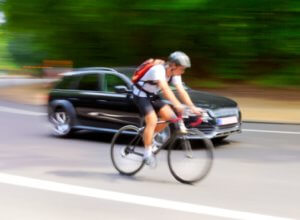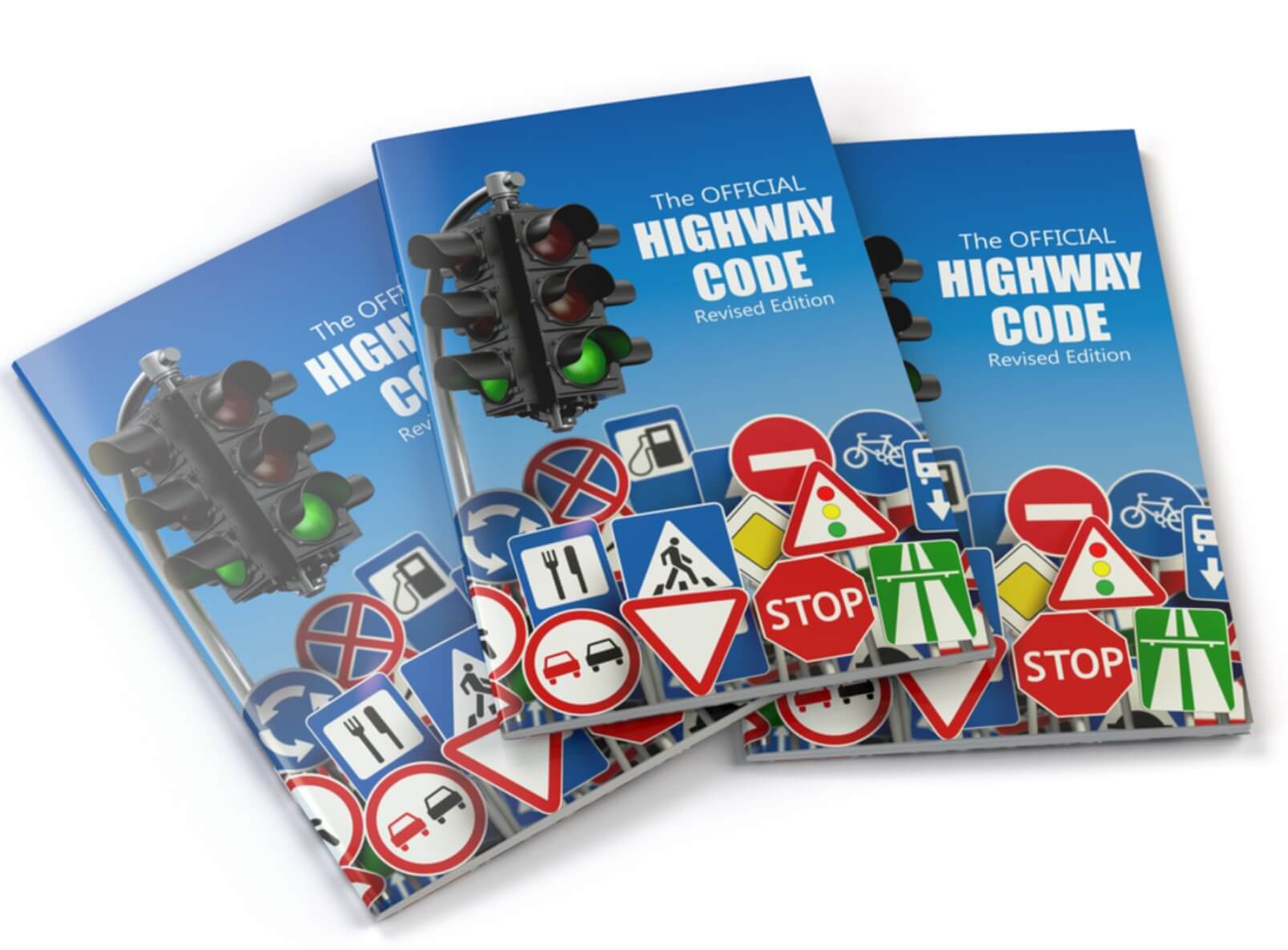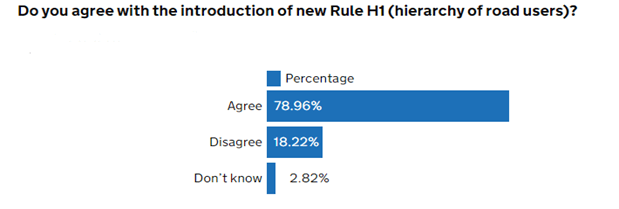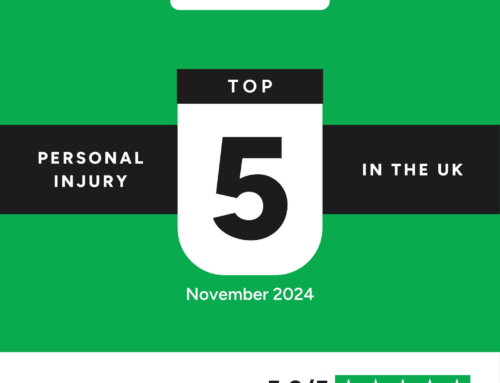A version of this blog was first published in June 2021. It has been updated to reflect the changes to the Highway Code, which took effect on the 29th of January 2022.
After several years in the making, the Highway Code has been the subject of important changes for the first time in over a decade, with both the addition of new Rules and amendments to existing ones. The latest version of the Highway Code came into force on the 29th of January 2022.
When transport minister, Grant Shapps, announced the proposed changes to the Highway Code in the Summer of 2021, he said:
“Millions of us have found over the past year how cycling and walking are great ways to stay fit, ease congestion on the roads and do your bit for the environment. As we build back greener from the pandemic, we’re determined to keep that trend going by making active travel easier and safer for everyone.”
The rules of the revised Highway Code align with the Department for Transport’s aim of making travel safer for vulnerable road users.
What is meant by the term ‘vulnerable road users’?
They are defined by rule 204 of the Code as ‘road users requiring extra care’ and include:
- Pedestrians
- Cyclists
- Motorcyclists
- Children
- Pensioners and Disabled pedestrians
- Animals
- Other drivers, e.g., inexperienced or older drivers
What are the main changes to the rules of the Highway Code concerning vulnerable road users?
The most prominent of the new rules introduce the innovative concept of a Hierarchy of Road Users.
Hierarchy of Road Users (H1)
At the top of this hierarchy of road users come pedestrians. They are followed by cyclists, horse riders and horse-drawn vehicles as being the road users who are most likely to suffer injury in the event of a road traffic accident.
At the other end of the ‘table of hierarchy’ come the road users with the most responsibility for ensuring they do not endanger the more vulnerable members of the hierarchy. These comprise HGV and passenger vehicles, and above them in the new pecking order are vans, minibuses, cars/taxis, and motorcycles.
However, the rule makers are keen to stress that it is still the responsibility of all road users to look after their own and each other’s safety.
Giving Way to Pedestrians (H2)
New rule H2 addresses drivers, motorcyclists, horse riders and cyclists as follows:
- At a road junction, you should give way to pedestrians who are crossing or waiting to cross a road you are turning into or from which you are turning.
- You MUST give way to pedestrians on a zebra crossing
- You MUST give way to cyclists and pedestrians on a parallel crossing
- You should give way to the above if they are waiting to cross on their respective crossings., and in addition:
- Cyclists should give way to pedestrians on shared cycle/pedestrian tracks
- Only pedestrians and users of wheelchairs and mobility scooters should use the pavement.
Giving Way to Cyclists (H3)

- You should not cut across cyclists who are going ahead whilst you are turning into or out of a junction or when changing lane:
- This applies whether cyclists are using a cycle lane,
- cycle track,
- riding ahead on the road,
and you should give way to them.
- You must not turn at a junction if to do so would cause the cyclist going straight ahead to swerve or stop.
- You should stop and wait for a safe gap in the flow of cyclists if you have to. This includes the situation where cyclists are:
- Approaching, passing, or moving off from a junction
- Moving past or waiting alongside stationary or slow-moving traffic flows
- Travelling at a roundabout
Whilst rules H1 to H3 represent the most significant of the changes to the Highway Code, a total of thirty-three others have been amended or introduced.
Of these, the introduction of safe passing distances is one of the more significant and welcome changes to be introduced as an amendment to rule 163 of the Highway Code.
Safe passing distances
Drivers should give motorcyclists, horse riders, horse-drawn vehicles and pedestrians ‘at least as much room as they would when overtaking a car’. The following are suggested as a guide:
- Leave a minimum distance of 1.5 metres at speeds under 30mph
- Leave a minimum distance of 2.0 metres at speeds over 30 mph
- Large vehicles to leave a minimum distance of 2.0 metres at all times
- Overtake horse riders and horse-drawn vehicles at speeds under 15mph and allow a distance of at least 2.0 metres.
- Allows at least 2.0 metres of space where a pedestrian is walking in the road (where there is no pavement).
- Extra care should be taken in bad weather.
- Drivers should wait behind the motorcyclist, cyclist, horse rider, horse-drawn rider or pedestrian and not overtake if it isn’t possible to pass at the recommended distances.
Cyclists can ride two or more abreast

“Cyclists should ride in single file when drivers wish to overtake, and it is safe to let them do so. When riding in larger groups on narrow lanes, it is sometimes safer to ride two abreast.”
This section merely confirms what is already permitted, and it is reinforced by specific inclusion in the Code to clarify those who believe that cyclists are in the wrong if they cycle two abreast.
The Dutch Reach method of opening the door whilst inside a vehicle
An amendment to rule 239 of the Code recommends that when a motor vehicle stops on the roadside, as the driver or passenger, you should :
“…open the door using your hand on the opposite side to the door you are opening; for example, use your left hand to open a door on your right-hand side. This will make you turn your head to look over your shoulder. You are then more likely to avoid causing injury to cyclists or motorcyclists passing you on the road or to people on the pavement.”
This method of opening the door of a vehicle is referred to as the ‘Dutch Reach’ technique since the method first became commonly used in the hugely cycling-friendly Netherlands.
Is the Highway Code law?
People often ask whether the rules of the Highway Code are ‘the law’ in the sense that if they breach any of them, they are liable to be prosecuted by the police.
Some of the Code’s rules are ‘must’ rules, and some are ‘should’ rules.
The rules that read “ you must” do (or not do) something are mandatory. So, if you fail to give way to pedestrians on a zebra crossing and get caught doing so by the police, you will be prosecuted, fined, and receive penalty points.
The majority of the rules only say “you should” do, or not do, something. In other words, they are only advisory.
Still, if you do not follow the guidance of a particular rule and an accident is the result, your ‘breach’ may be used in evidence in a criminal court, as well as in a civil court of law should you be sued for personal injury compensation in a road traffic accident claim. By way of confirmation, the Road Traffic Act 1988 provides:
“A failure on the part of a person to observe a provision of the Highway Code shall not of itself render that person liable to criminal proceedings of any kind but any such failure may in any proceedings (whether civil or criminal and including proceedings for an offence under the Traffic Acts, the Public Passenger Vehicles Act 1981 or sections 18 to 23 of the Transport Act 1985) be relied upon by any party to the proceedings as tending to establish or negate any liability which is in question in those proceedings.”
Therefore, although many of the rules are merely advisory, there could still be severe consequences for a driver whose failure to follow a ‘should’ rule results in an accident.
What are the effects of the new rules likely to be?
1. The amended Highway code introduces new initiatives to decrease the number of road traffic accidents involving vulnerable road users; pedestrian accidents, cycling accidents, motorcycle accidents and horse-riding accidents. These are positive steps towards reducing the number of casualties and the number of road traffic accident claims, brought by those who suffer personal injury.
Feedback received by the Government during consultations with the public prior to the introduced rules suggests that the public overwhelmingly favours the new ‘hierarchy of road users’ concept.
(Image courtesy of Department for Transport ‘Consultation Outcome’ document)
2. Those lower down the new proposed hierarchy of road users, HGV and LGV drivers, in particular, may feel that they are being harshly targeted when every road user should be responsible for their own and other road users safety.
The Chief Executive of the Road Haulage Association, Richard Bennett, was reported as saying:
“It is inherently unjust to make commercial vehicle drivers and other motorists responsible for the safety of others over whom they have no control. As far as we can see, there is little, if any, justification for these changes.”
3. A moot point is how effective the alterations to the Highway Code will be in changing driving habits. According to a poll carried out by Halfords, one in five of those interviewed said they had not looked at the Highway Code in at least ten years. It begs the question as to how many people will ever be aware of the changes.
4. Are the new rules likely to cause more antagonism, not less, between motorists and other road users, cyclists, and pedestrians, in particular?
The brief answer is that if the new proposals are adopted, as is expected, and people find out about them only in the form of news reports or via social media, then the result may be a sense of injustice on the part of the drivers of cars, vans lorries and of other larger vehicles.
It is interesting to note that in the week before the new Highway Code came into force and over the weekend of its introduction, some newspapers chose to run with headlines such as:
‘The Day Cyclists Took Over the Roads’ Daily Mail
‘Drivers and Cyclists at War over changes to the Highway Code’ Evening Standard
Highway Code Changes Make Rear-End Crashes More Likely, Warns AA Daily Telegraph
Other newspapers simply got things wrong. A few of them got quite excited about the introduction of advice on how to open the door of a vehicle using the Dutch Reach method. Some even went so far as to publish articles warning their readers that if the Dutch Reach method isn’t used and a cyclist, motorcyclist or pedestrian gets ‘doored’ in the process, the perpetrator will now get fined £1000 for committing a criminal offence.
You could indeed get a fine of £1000 for causing injury by opening your door into someone’s path. However, it’s been the case that you will get fined not only for opening a door into a passer-by but also for ‘causing or permitting’ someone else to open a door that hits someone passing by. The law has been thus, ever since the Road Vehicles (Construction and Use) Regulations 1986 came into force, over 30 years ago.
5. The key to whether the new Highway Code becomes a success or a total damp squib that road users ignore, save for those about to take a driving test, is more likey down to what the Government does. Will the Department for Transport publicise the changes to the Highway Code on a sufficiently grand scale to make the majority of the population aware of the changes?
Neil Greig of IAM Roadsmart seemed to hit the nail on the head when he was quoted as saying:
“Regardless of what changes are introduced, it is clear there will be a need for a huge publicity campaign to ensure the amendments to the Highway Code are understood and adopted by the millions of existing UK drivers, motorcyclists, and road users.
‘The simple truth is that most of us don’t read the Highway Code unless we drive or ride professionally or are about to take a test.
‘The Department for Transport needs to be realistic about the impact simply changing a seldom read document will have on the behaviour and safety of road users.”
In the same vein, the Guardian published an article on the 30th of December 2021, warning that the much of British public were blithely unaware of the imminent changes to the Code and referred to claims that government ministers were ‘missing in action’ in terms of getting the word out about the changes.
In response, the Department for Transport insisted this was not the case, with a spokesperson saying:
“The proposed upcoming changes to the Highway Code will improve safety for cyclists, pedestrians and horse riders and were announced to the national press.
“The department has established a working group of key organisations to ensure that messages about the changes are as widespread as possible, and our well-established Think! campaign will continue to ensure all road users are aware both when these changes come into effect and beyond.”
It would appear to be very much a case of, ‘Watch this Space.’
Mooneerams solicitors are specialist road traffic accident claim solicitors with twenty years ‘experience of handling personal injury claims of all types, including;
Or any other type of motoring accident claim
Call us on
We handle most personal injury claims on a No Win, No Fee basis.










